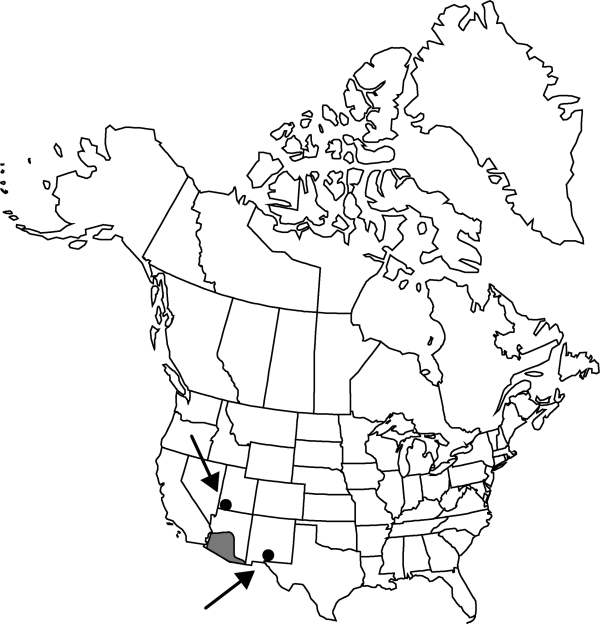Boerhavia coulteri
Proc. Amer. Acad. Arts 24: 70. 1889.
Herbs, annual; taproot tapered, soft or ± woody. Stems erect to decumbent-ascending, sparingly to profusely branched throughout, 2–8(–15) dm, usually minutely puberulent, often also with long, spreading hairs, occasionally also glandular basally, glabrous distally. Leaves mostly in basal 1/2; larger leaves with petiole 5–30 mm, blade lanceolate, ovate, oval, deltate-ovate, or narrowly deltate, 10–50 × 6–32 mm (distal leaves usually shorter, proportionately narrower), adaxial surface usually glabrous, sometimes sparsely hirtellous, abaxial surface paler than adaxial, usually glabrous, sometimes sparsely puberulent or with few coarse hairs, usually neither surface punctate, base acute, obtuse, or round, margins sinuate, often crisped, apex acute, obtuse, or rounded. Inflorescences terminal and axillary, forked ca. 2–5 times unevenly, usually with sticky internodal bands; branches strongly ascending, terminating in spicate or racemose flower clusters, axis 15–60 mm. Flowers: pedicel 0.1–1.6 mm; bracts at base of perianth soon deciduous, 1–2, usually lanceolate, lance-acuminate, or linear-lanceolate, rarely ovate, 0.4–1 mm; perianth white to pale pink, campanulate distal to constriction, 0.7–2 mm; stamens (1–)2–3(–4), included or slightly exserted. Fruits 4–20(–22) per cluster, remotely spaced or overlapped by 1–100% of their length, or 2–4 in group, separated by small gap from next group and with distal spikelets overlapping, straw colored to pale red-brown, narrowly obovoid to narrowly obpyramidal, 2–3.2(–3.6) × 0.9–1.1(–1.4) mm (l/w: [1.9–]2.1–3.1[–3.3]), apex rounded to bluntly conic-truncate, or truncate, glabrous; ribs 5, obtuse or round-obtuse, often with sharp ridges, slightly rugose near sulci; sulci 0.1–0.3 times as wide as base of ribs, smooth or slightly rugose, not papillate.
Distribution

Ariz., Calif., N.Mex., Tex., Utah, n Mexico.
Discussion
Varieties 2 (2 in the flora).
Selected References
None.
Key
| 1 | Fruits often overlapping 50-100% of their lengths, often ± fasciculate in groups of 2-4, 2.5-3.6 mm, apex truncate, round-truncate, bluntly conic, or rounded | Boerhavia coulteri var. coulteri |
| 1 | Fruits remote or some overlapping 1-50% of their lengths, infrequently 2-3 in a cluster, 2-2.4+ mm, occasionally longer, usually rounded apically | Boerhavia coulteri var. palmeri |